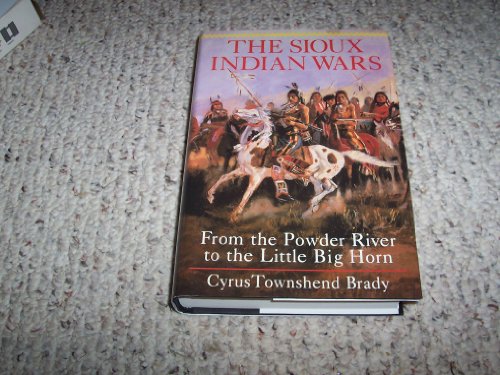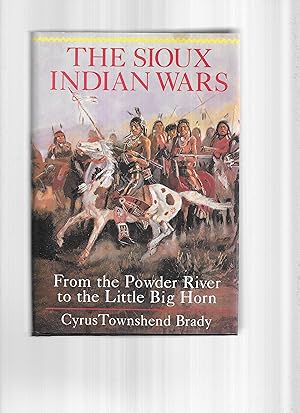Brady Cyrus Townshend (2 results)
Product Type
- All Product Types
- Books (2)
- Magazines & Periodicals
- Comics
- Sheet Music
- Art, Prints & Posters
- Photographs
- Maps
- Manuscripts & Paper Collectibles
Condition
Binding
- All Bindings
- Hardcover (2)
- Softcover
Collectible Attributes
- First Edition
- Signed
- Dust Jacket (2)
- Seller-Supplied Images (1)
- Not Print on Demand (2)
Free Shipping
- Free US Shipping
Seller Location
Seller Rating
-
The Sioux Indian Wars, form the Powder River to th
Published by Indian Head, 1994., 1994
ISBN 10: 0880298979ISBN 13: 9780880298971
Seller: N. Fagin Books, Chicago, IL, U.S.A.
Book
1992. reprint. North America, Native Americans. Indian Head Books, NY. Very good boards and good+ dust jacket 423p.
-
THE SIOUX INDIAN WARS: From The Powder River To The Little Big Horn
Published by Y. 1992. Barnes & Noble., 1994
ISBN 10: 0880298979ISBN 13: 9780880298971
Seller: Chris Fessler, Bookseller, Howell, MI, U.S.A.
Book
black hardcover 8vo. (octavo). dustwrapper in protective plastic book jacket cover. very fine cond. mint cond. looks new. like new. as new. binding square & tight. covers clean. edges clean. contents free of markings. dustwrapper in fine cond. not worn or torn or price clipped. nice clean copy. no library markings, store stamps, stickers, bookplates, no names, inking, underlining, remainder markings etc~. 6th printing (#6 in # line) of this facsimile reprint of the 1904 original edition (published as Indian Fights And Fighters). b&w frontis. illustration. 425p. 25 b&w illustrations. 13 b&w maps & plans. 2 appendices. index. bibliography. american history. american indian history. military history. ~ Spanning the years from just after the Civil War, to the Battle of Wounded Knee in 1890, The Sioux Indian Wars is the chronicle of an important part of our American heritage. At the close of the Civil War the westward~moving tide of settlers had pressed back from the Missouri and the Mississippi Rivers the Sioux and their allies the Cheyennes, the largest and most famous of the great Indian tribes. At the time, the territory was practically devoid of white settlements. It was a great sweep of land comprising every variety of climate and soil, from prairies to fertile valleys. The Big Horn Mountains were the most precious section, controlled by tribes fearful of any intrusion by settlers. The many rivers which traversed this territory teemed with fish, and the valleys that they watered were abundantly fertile for the growing of the few crops the Indians found necessary for support. This land also attracted the attention of white settlers, who, with a natural spirit of restlessness following the Civil War, had gathered their families, loaded their few household belongings into wagons, and in parties of varying sizes made their way westward. At the same time the railroads also began to push westward, and along with the settlers, they demanded the protection of the government. Filled with the flavor and resonance of the time, The Sioux Indian Wars is an exhaustive history of the clash of these two very different cultures. Each battle is thoroughly examined and illustrated with maps and diagrams; drawings by Frederick Remington and others have been reproduced. Included is a full account of the Battle of the Little Big Horn, explored from several points of view. Finally there are the people themselves, soldiers and Indians alike. There are many true stories in the Sioux Indian Wars, stories that in the words of the author "speak for themselves . and ring like a trumpet call.".



